EXECUTIVE SUMMARY
When analyzing this FY 2025 edition of the Finance Act, we emerge with a sense of assurance and optimism:
A confidence provided by the new resilience threshold of public finances
By approaching 20% of GDP in 2025E, tax revenues have reached historically high levels and should stabilize at least until 2027E, according to projections by the Ministry of Finance(1). The Treasury has thus developed a solid base of recurring revenues. This is the translation of a process of reducing tax loopholes and broadening the taxpayer base. The public sector is also strengthening its revenues through non-tax revenues which, in turn, reach a peak of 4.4% of GDP. Here, Morocco is relying on the ramp-up of its Public Establishments and Enterprises as much as on the liquidity provided by the new financing mechanisms.
Overall, Morocco's capacity to cope with a possible shock is significantly strengthened.
Similarly, Morocco would have all the latitude to pursue its social reforms and tackle in particular the costly project of the viability of the pension system. The latter becomes more pressing in light of the latest census figures which show a deceleration of population growth synonymous with a "premature" aging of the population in Morocco.
Finally, we can only welcome the high credibility of the public finance figures published by the Ministry after the positive PEFA report(2) at the end of the mission carried out by Morocco's main international funding actors (World Bank, IMF, AFD, EU and AfDB).
Optimism regarding Morocco's ability to continue its development momentum
It is true that the forecasted growth rate of 4.6% is in itself somewhat optimistic in view of the growth projection of +11% of crops VA which presents a downward risk. That said, the lack of rainfalls cannot slow down the development dynamics in which Morocco adheres. Taking advantage of the dynamics of preparation for the African Nation Cup 2025 and WC 2030 sporting events, and the unfailing desire to bring to fruition structuring projects for Morocco such as energy, infrastructure, health and education, Morocco illustrates the image of a large open construction site. This dynamic is also reflected in the economic context. Overall, the indicators are well oriented at the end of 2024 for inflation, public finances, as well as for flows with the international or even the key sectors of the economy. This constitutes a favorable environment for the start of the execution of this 2025 FA in the best conditions. This should not, under any circumstances, relegate the subject of employment to second priority. Indeed, the 2025 FA allocates a budget of MAD 14 Bn, including MAD 12 Bn for the promotion of investment in SMEs and VSEs, MAD 1 Bn for the preservation of employment in rural areas and MAD 1 Bn for the inclusion of active employment programs.
Read more.




